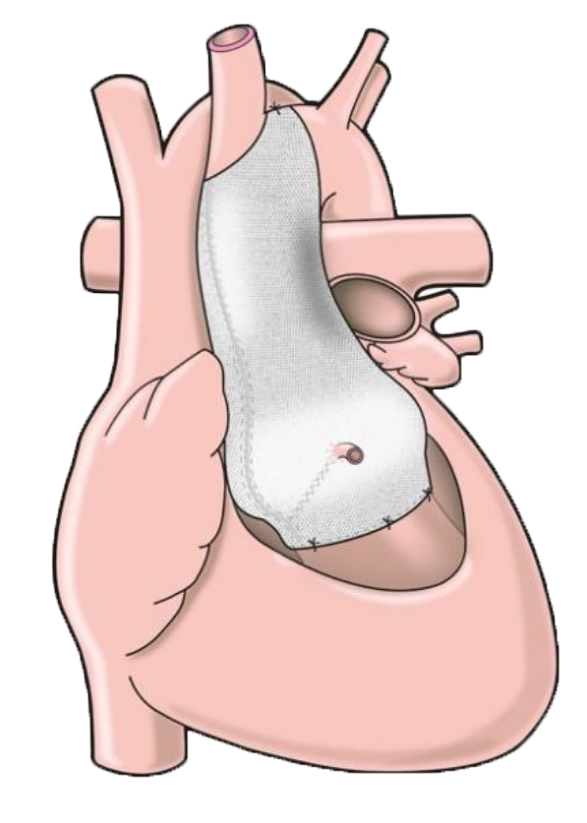My name is Kevin Conway. I am a US Citizen with Marfan Syndrome and chose to undergo surgery to implant the PEARS device from Exstent. I read many similar patient stories on the Exstent website prior to deciding to move forward with PEARS. I hope my experience can give you the confidence to make the right decision for you.
For Marfan Syndrome patients, the most significant health risk is unabated growth of the aortic root. Should the root grow past a certain size, surgery becomes necessary to prevent spontaneous dissection or rupture.
I had been tracking the growth of my aorta through Cedars-Sinai Medical Center and, later, the Stanford Center for Marfan Syndrome and Related Aortic Disorders. My cardiologists performed bi-annual echocardiograms and occasional CT and MRI scans. Despite my lifestyle changes and prophylactic blood pressure medications, my aorta steadily grew from 4.1cm to 4.8cm over an eleven-year period, crossing the threshold by which surgical intervention became necessary.
The cardiologist care I received in the United States was very good, but the options available for surgery were not. My cardiologists informed me that the surgical option available to me was the Valve-Sparing Root Replacement (VSRR) surgery.
I did research and found out about the ExoVasc Personalized External Aortic Root Support (PEARS) surgery, a customized and cutting-edge aortic root support technique. I read several academic papers, Reddit forums, and the patient stories section of the Exstent website. I consulted with two American surgeons, one of whom was skeptical of PEARS and another who was formerly skeptical but now sold on PEARS. One of the most influential sources was a video of a TED talk from Tal Golesworthy, the inventor of the PEARS, about the benefits of the surgery as compared to VSRR.
There was one issue with PEARS: the FDA has not yet approved the PEARS device in the United States. I was faced with either (a) doing the VSRR surgery, a surgical procedure that I felt was sub-optimal, or (b) traveling to a country that offered the PEARS surgery. I opted for option (b).
I chose to do PEARS because of the following reasons:
- While I am not a medical professional, it seemed intuitive that keeping my own aortic root and adding an external supporting element (i.e. PEARS) was better than removing my aortic root entirely and replacing it with an artificial aortic root (i.e. VSRR).
- Tal Golesworthy, the inventor of PEARS and owner of Exstent, was PEARS patient number one. He has had the device in him for more than twenty years without major complications. There is no stronger vote of confidence than that.
- I could continue to be followed up by my cardiologists in the United States post-surgery.
- I did not want to any re-operation in the future. VSRR comes with a material re-operation risk; PEARS, by contrast, appears to indicate a very low probability of re-operation.
- As a former competitive athlete, I desperately wanted to be able to more vigorously exercise post-surgery. PEARS offered that opportunity while VSRR did not.
After I decided that I wanted to do PEARS, I needed to figure out where to do the operation and what surgeon would perform it. I landed on Dr. Conal Austin from London Bridge Hospital in England, who appeared to be the most experienced with PEARS.
As it so happened, my wife and I were on vacation in London in September, around the time I began researching PEARS. I booked a consultation with Dr. Austin. He explained the surgery, recovery process, and experiences from other American patients. By the end of the consultation, he booked me a CT scan to build my PEARS graft. The CT was performed mere minutes after we ended our consultation. As an American patient used to delays in bookings and approvals for tests, I was blown away by the efficiency of London Bridge Hospital. Dr. Austin even sent me a WhatsApp message later that night confirming the details of the CT scan.
That same day I managed to meet with an American who had PEARS surgery just a week prior. He was meeting with Dr. Austin just after my consultation. Dr. Austin introduced us and we exchanged numbers. This patient proved invaluable to me as he gave me lots of advice with recovery, where to stay, what to expect, etc.
After meeting with Dr. Austin and getting the CT scan, I was committed. I booked a date (November 22, 2024) with Dr. Austin’s staff. I arranged my hotel stay across the river from the hospital that had a washer/dryer in-unit and a small kitchen to begin on November 16. I expected to be London for three weeks so I made my hotel stay end on and flight back to California for December 7.
On November 16, my wife and I headed back to London. We arrived on Saturday. I had blood work and an X-Ray completed that Monday. We had the rest of the week to walk about London and explore. While I was not nervous about the surgery, I was anxious to get it done. I had a strong sense of wanting to work through my recovery and be productive.
My surgery was scheduled for Friday. I was to arrive at London Bridge Hospital just before 6:00am. When we arrived, they showed us to a room. I met with the anesthesiologist, a few nurses, and Dr. Austin. I changed into a gown and we headed downstairs to the operating theater. I kissed my wife goodbye and got on the table. The anesthesiologist and his team gave me a few instructions. I closed my eyes, thought of my kids and family, and knocked out before I knew it.
Hospital Day 1: I awoke from surgery in the Intensive Care Unit, which was expected, and did not feel much pain. I felt a slight bit of discomfort. There were a few lines in my arms, chest, and body but nothing that was painful. I was aware of what was going on and was talking with my wife and the nurses. There was at least one nurse with me nearly at all times in the ICU. It was hard to get a deep breath, but that came back over the coming days. I also got very sweaty, usually at night, so the nurses brought me some ice packs for my head and a small fan which helped tremendously. Overall, I felt way better than I expected. I actually made a few work-related calls that night (my wife almost killed me).
Hospital Day 2: I started to feel a bit more discomfort with some of the lines that were in me. We managed to remove some that day, which was great. I also stood up that day. My back began to ache as I was lying in bed all day. But, again, it was not pain, just discomfort. I had nearly no appetite at all. I only could handle eating a tiny bit of plain bread, yogurt, and Sprite. Day 2 was probably the worst. My energy and focus were not quite there to entertain myself with books or my phone. I felt sore and a bit nauseous. I was ready to stand up and begin walking. Fortunately, they transferred me to the High Dependency Unit at the end of day 2.
Hospital Day 3: I still did not feel like eating much, but I felt I was turning the corner. The physio therapy team got me on my feet and walking around the ward. The most difficult part about walking was my shallow lung capacity. I had a partially collapsed lung from the surgery (not uncommon with Marfan patients) so I felt like someone was sitting on my chest as I was trying to breathe. I focused on breathing deeply, which made me cough. Coughing hurt but was necessary to clear the fluid buildup in my collapsed lung. I managed to do several laps in the ward throughout the day, coughing and gaining back some more ability to breathe. It felt great to not be lying down. Additionally, one of the nurses helped me with a shower on Day 3, which made me feel so much better. Also, my wife snuck me a burger and fries for dinner, which I finally was able to eat.
Hospital Day 4: More walking, better lung function, better eating, and overall getting back to a small sense of normal. Day 4 I finally felt good enough to watch some TV and chat with friends. I was ready to get out of there.
Hospital Day 5: I was told I would be discharged. They ran a few tests, gave me some medicine, and by the late afternoon I was out of there and to my hotel.
Overall, London Bridge Hospital was 10/10. The nurses were responsive, knowledgeable, and incredibly kind. Dr. Austin and his team came by my room several different times over the days to check in on me and answer my questions.
When we got back to the hotel, I focused on resting, walking, eating right, and resting some more. I managed to walk one kilometer on the hotel treadmill the day I got back. I could have definitely pushed it more but I wanted to ease into it. A few days later I was walking several miles and feeling pretty good. Sleeping was a bit annoying as I had to sleep elevated on my back and I had some night sweats, but not too bad. I did get tired more easily so I would take naps each day. But with each day, I got stronger and back to normal. My wife and I even would go out to eat and did some Christmas shopping throughout our time post-hospital.
Dr. Austin cleared me to go back to the States on Monday night, December 2. We stayed through December 7, which was exactly three weeks from when we arrived. Those extra days were worth it as I was able to get a bit stronger and less sore.
I am writing this about two and a half weeks post-surgery. While I feel sore and more fatigued at times, overall I feel much better than I expected. I am working in office for about 80% of each day and am walking several miles a day.
I am grateful to have the opportunity to get PEARS. I highly recommend the operation, London Bridge Hospital, and Dr. Conal Austin for those who need aortic root surgery. Thank you Exstent!




